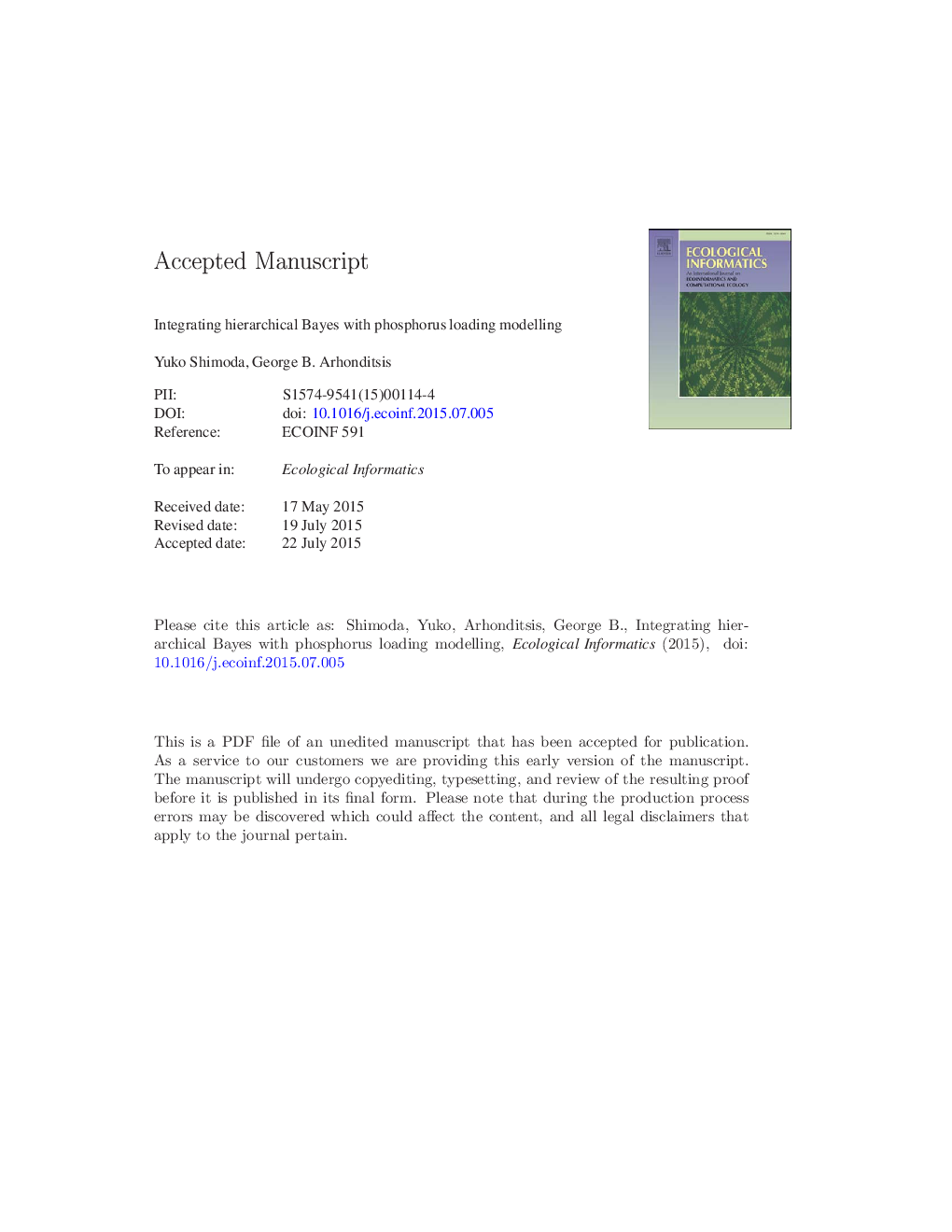| Article ID | Journal | Published Year | Pages | File Type |
|---|---|---|---|---|
| 6295876 | Ecological Informatics | 2015 | 48 Pages |
Abstract
The causal linkage between lake productivity and phosphorus loading has provided the basis for a family of models that predict lake total phosphorus concentrations as a function of lake morphometric/hydraulic characteristics, such as the areal phosphorus loading rate, mean lake depth, fractional phosphorus retention and areal hydraulic loading. Most of these empirical models have been derived from “cross-sectional” datasets, comprising multiple point measurements or single averages from a number of lakes, and are typically used to predict changes within a single system at different points in time. This practice implicitly postulates that the large scale (cross-sectional) patterns described in the model are also representative of the dynamics of individual systems. In this study, we relax this assumption using a Bayesian hierarchical strategy that aims to accommodate the role of significant sources of variability (morphology, hydraulic regime). We first examine several hierarchical structures representing different characterizations of model error, parameter covariance, and prior distribution followed by the hyperparameters. Our analysis primarily highlights the robustness of the posterior group-level patterns to the hierarchical formulation developed. We also show that the delineation of homogeneous subsets of lakes with respect to their morphological/hydraulic characteristics and the subsequent integration with hierarchical frameworks may give empirical phosphorus retention/loading models with better predictive ability. We then present a complementary exercise that aims to accommodate the spatial and seasonal total phosphorus variability within individual systems, using a spatially-explicit simple mass-balance model forced with idealized sinusoidal loading. Our study concludes by advocating that the hierarchical Bayes provides a conceptually appealing framework to gradually accommodate different sources of variability and more prudently increase the complexity of simple empirical models.
Keywords
Related Topics
Life Sciences
Agricultural and Biological Sciences
Ecology, Evolution, Behavior and Systematics
Authors
Yuko Shimoda, George B. Arhonditsis,
